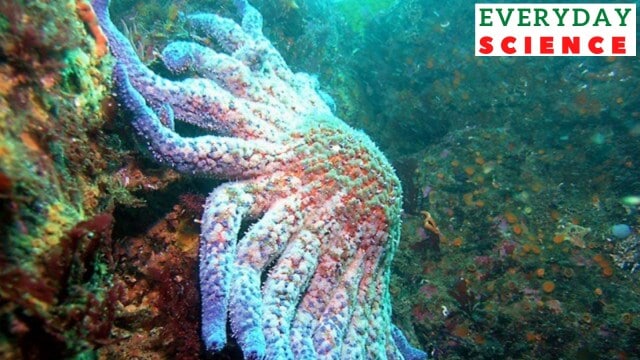In 12 years, 5 billion starfish ‘wasted away’ from a mysterious disease: How culprit was finally found
Why do starfish matter, and why were so many of them dropping dead? Why did it take 12 years to find the cause of the disease? We explain.
 Starfish perform a vital function in the marine ecosystem, maintaining a stable food chain. (Photo: Wikimedia Commons)
Starfish perform a vital function in the marine ecosystem, maintaining a stable food chain. (Photo: Wikimedia Commons)Twelve years after a mysterious disease started killing off starfish in droves — more than 5 billion are estimated to have died since 2013 — scientists have found the culprit to be a bacterium.
The starfish, or sea stars, of various species were dying off a wasting disease, in which their limbs fell off and their bodies melted away to leave just a pile of gunk. The epidemic was found along the Pacific coast of North America, all the way from the freezing waters off Alaska to the warmer shores of Mexico.
Till a few years ago, scientists believed a virus was causing the outbreak. However, a study published in the journal Nature on August 5 said the starfish were falling victim to Vibrio pectenicida, which is related to the bacteria that causes cholera in humans.
Why was this epidemic a cause for major concern, and how has the bacterium responsible finally been found?
The problem
The wasting disease was impacting whole populations of starfish, but the worst affected were sunflower sea stars, which lost almost 90 per cent of their population.
Starfish perform a vital function in the marine ecosystem, maintaining a stable food chain. When billions of starfish died, the population of sea urchins, which they feed on, exploded. These sea urchins started eating away whole forests of kelp, a seaweed other marine animals thrive on and which helps sequester carbon.
How did scientists find the bacterium responsible?
It was a long process. While studies earlier focused on a virus type called the densovirus, it was later found to occur naturally in some starfish.
Also, some studies were examining the tissue samples of the dead starfish, when the bacterium was in fact present in the coelomic fluid, the equivalent of starfish blood.
The breakthrough came at the Hakai Institute in British Columbia, Canada, where scientists raised sunflower sea stars in the labs, and then began exposing them to the infected starfish in various ways, like bringing them physically in contact with diseased body parts or injecting mixtures from such parts.
It was found that injections passed on the infection, but not when their contents had been treated with heat. In effect, boiling was killing off the cause of the disease, pointing to a bacterium.
The scientists then examined the coelomic fluid of both healthy and infected starfish. Dr Alyssa Gehmanopens, co-author of the study, was quoted by the UK’s National History Museum as saying, “When we compared the coelomic fluid of exposed and healthy sea stars, there was basically one thing different: Vibrio. We all had chills. We thought, ‘That’s it. We have it. That’s what causes wasting’.”
However, they conducted further confirmatory tests, by injecting the bacterium in healthy starfish, and examining sea water before and after an outbreak.
How will this finding help?
Understanding the cause of a disease is of course the first step to treating it. Scientists will now see if starfish in the sea can be given probiotics to fight off the bacteria, and if Vibrio-resistant starfish can be grown in labs and introduced into the wild, among other measures.
Is there need for caution?
Yes. “It’s absolutely critical not to jump the gun…It’s really, really hard to do these type of experiments, and particularly the interpretation of it is somewhat difficult,” Cornell marine biologist Ian Hewson told The Washington Post. He pointed out that the study was carried out on only one type of starfish, and also injecting a starfish in a lab may throw up different results from what actually happens in the ocean.
To add to this, the environment in an ocean is highly changeable, unlike the controlled surroundings of a lab.
- 01
- 02
- 03
- 04
- 05






































